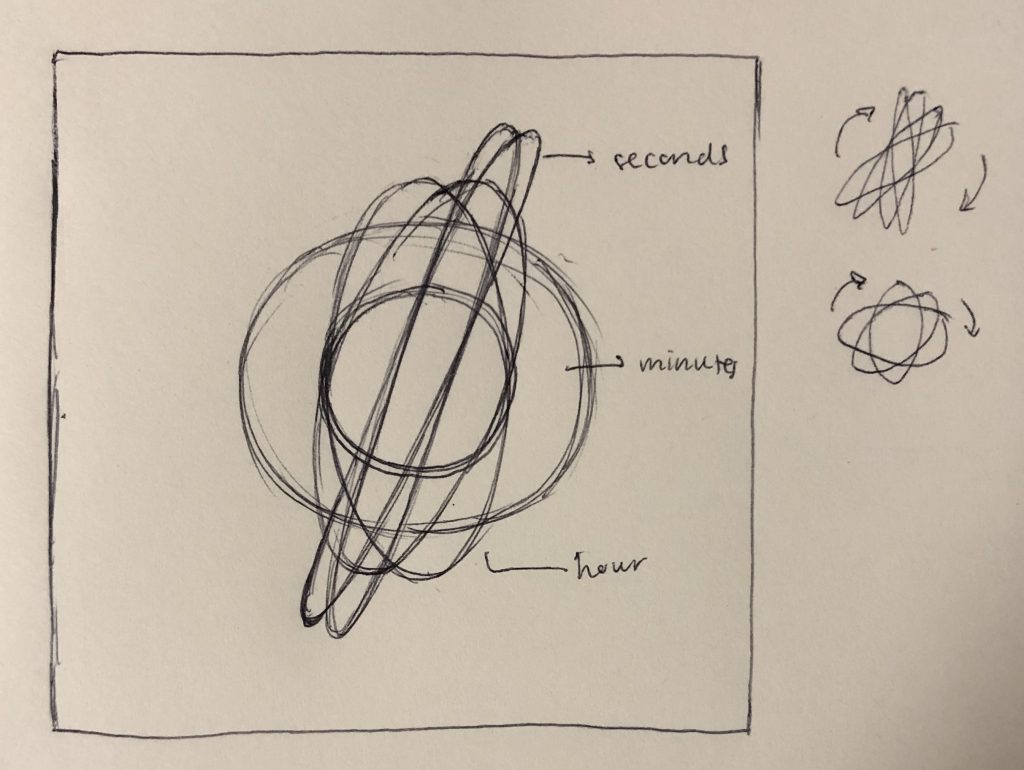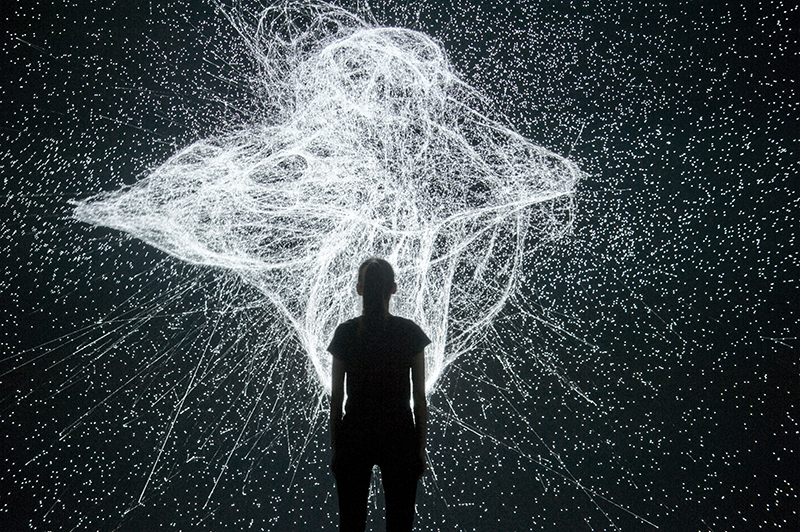
Artificial Arcadia is an installation by Swiss-based art collective Fragmentin. The installation visualizes the Swiss mountain range using moving poles and a white cloth. They appear as mountain peaks to visitors, who’s movement appears as a heat map on a screen behind the mountain range. This is an interesting use of live user data and data regarding how much human-made construction is impacting the environment of Sweden. As people move around the exhibit, they generate ‘heat’, which is visualized as a red cloud on the mostly blue screen. This, in turn, lowers the peaks of the ‘mountains’, which represents melting icecaps in the Swiss mountains.

There are many sensors and computers working to achieve this exhibit. There must be at least motion sensors, live data collection on construction sites, and perhaps even carbon footprints. This data is also computed as vertical heights of the poles that create the mountain peaks. I admire the simplicity and multilayered nature of this installation. Every part is a metaphor, and Fragementin‘s work all tend to have many layers of meanings.
The piece:
![[OLD FALL 2019] 15-104 • Introduction to Computing for Creative Practice](../../../../wp-content/uploads/2020/08/stop-banner.png)









